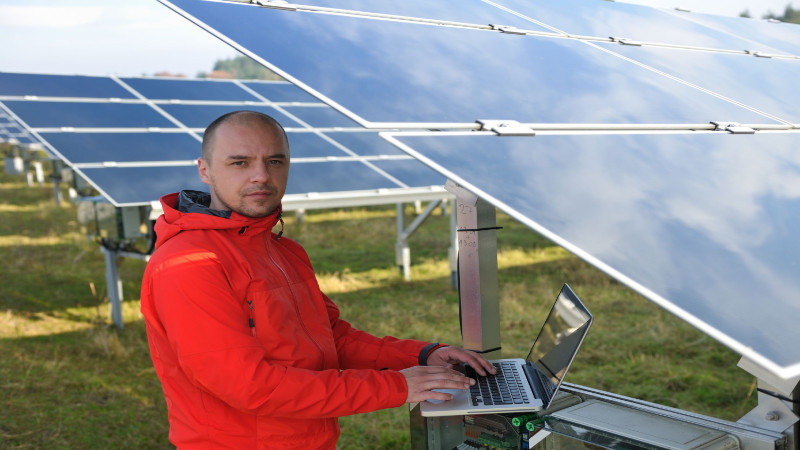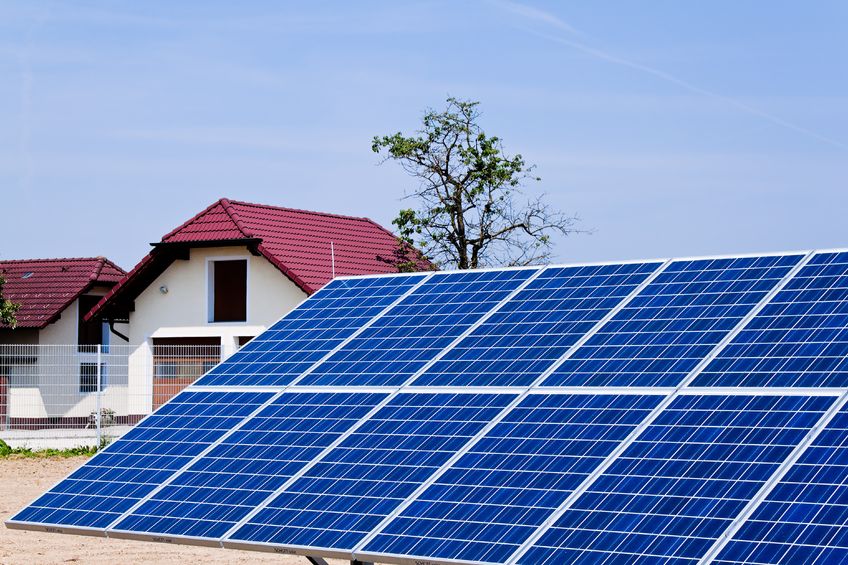Most solar panels conform to one of two different layouts, a 60-cell solar panel or a 72-cell solar panel, with only a few exceptions. The 60-cell layout uses a 6 x 10 grid of cells and the 72-cell layout uses a 6 x 12 grid of cells. This means most solar panels have a similar width, but different lengths. Choosing between these two sizes is generally a decision made for you by the solar installation and it usually depends on the space you have available and the application of the installation.
Solar Panel Dimensions
These two standard layouts come in standard dimensions that only vary slightly based on the framing the manufacturer uses. The 60-cell solar panels come in at right around 36-inches by 66-inches and the 72-cell solar panels come in at about 39-inches by 77-inches. While these are the two most common layouts, some manufacturers create different layouts such as Panasonic’s 96-cell solar panel.
Choosing between these two layouts largely depends on the dimensions of the roof you intend to install the panels on, whether the installation will be on the ground or roof, and whether or not it is a commercial solar installation. The 72-cell solar panels offer slightly more power per square foot, but the 60-cell solar panels offer a bit more flexibility in the layout of the panels. For a standard 6.5 kW solar energy system designed to power an entire house, a 72-cell system requires about 375 square feet and a 60-cell system requires about 429 square feet. This difference comes from the added space required for the frame of each panel. Since the 72-cell system requires less framing per cell it also provides more power per square foot. This also applies to the weight of the panels. For a commercial application it can be cheaper acquire 72-cell modules on a larger scale. These modules will often be poly crystalline, and since many commercial applications are on the roofs of flat buildings there is no aesthetic downside to using large polycrystalline solar modules. For a ground mount an installer might recommend a 72-cell panel based on the size and wattage output as mentioned above and also because of limited aesthetic concerns as also mentioned above.
Which Type of Panel Works Best For Your Needs?
The panel type that works best for your needs depends on the largest restraint for your solar energy system. Most often the restraints for a solar energy system come in two forms, space and weight. Roofs can only accommodate so much weight without compromising its structural integrity. There’s also a limited amount of space and sometimes the layout of the space requires a specific configuration of the panels.
If weight is the largest constraint to the design of your solar energy system, figuring out how to utilize 72-cell solar panels will help you achieve the power you need. This is because 72-cell solar panels provide more power per pound than their 60-cell counterparts. The reduction in weight due to less framing per cell allows 72-cell solar panels to work on roofs where 60-cell solar panels will not work. This also applies if you have a limited square footage of space on your roof.
However, if your roof has an unorthodox layout or can be divided up into 36-inch by 66-inch sections, 60-cell solar panels could be your best option. With a solar energy system based on 60-cell solar panels, you have more control over the layout of the panels from their reduced size. This allows 60-cell solar panels to accommodate unique roof designs while still covering the entire area with solar panels to optimize the power output.
Visit Business Name today for more information.

